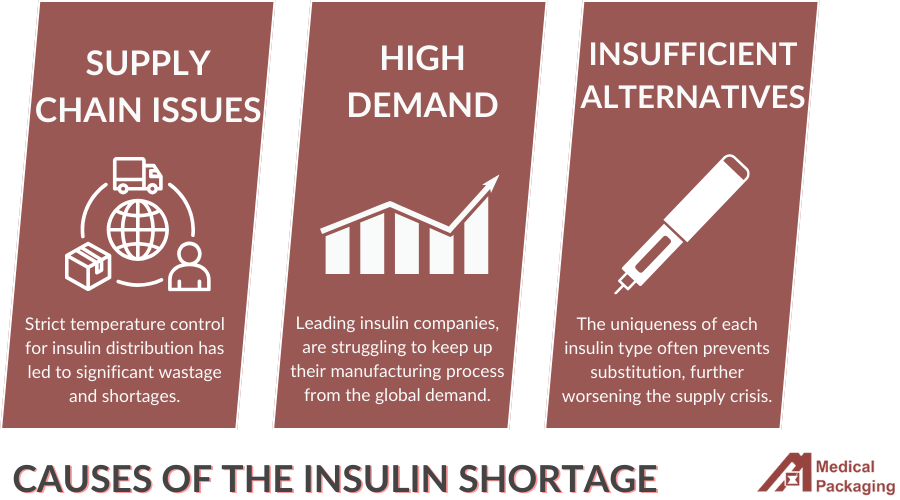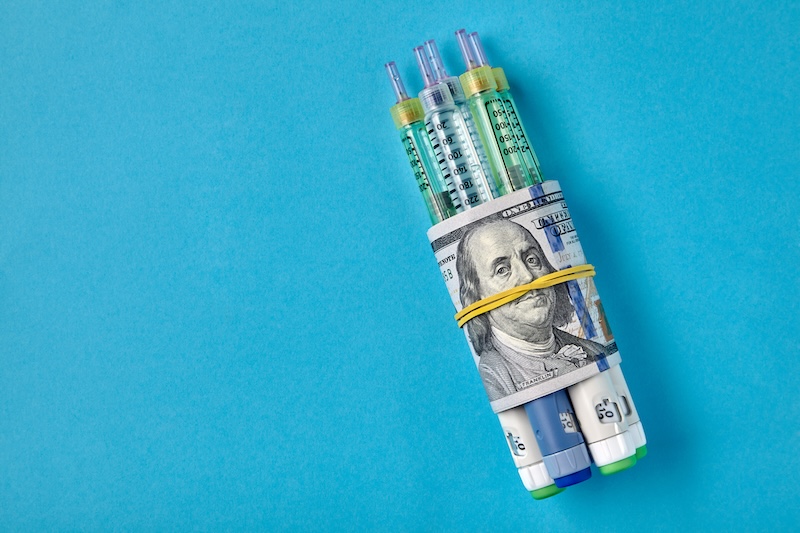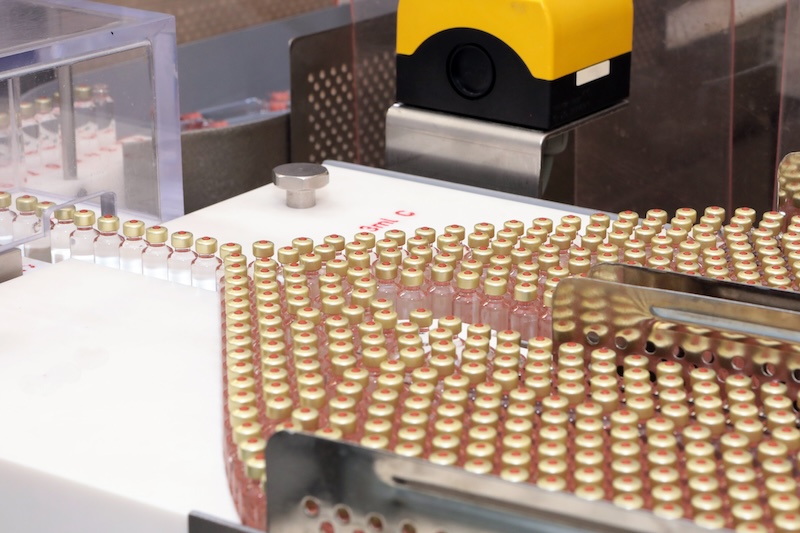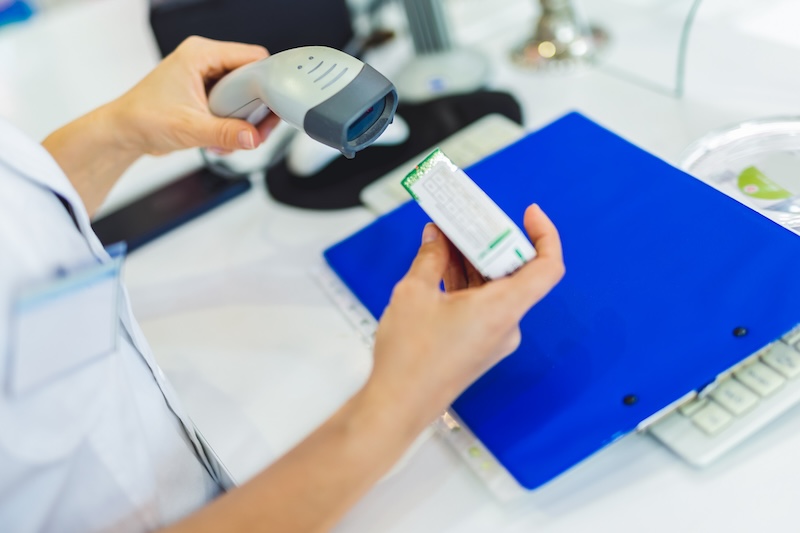Insulin Shortage Updates, Causes & Resolutions
The U.S. is currently experiencing a significant increase in drug shortages, reaching a decade-high with 323 active shortages in the first quarter of 2024. These shortages primarily affect generic sterile injectable medicines like various types of insulin due to factors like economic pressures, manufacturing complexities, and supply chain vulnerabilities.
When it comes to diabetes treatment and management, insulin plays a pivotal role. This lifesaving medication is essential for controlling blood sugar levels. Without access to it, people with diabetes are at risk of serious complications such as diabetic ketoacidosis, a life-threatening condition that needs immediate emergency care.
However, recent months have seen a worrying development that is creating concern across the healthcare sector – an insulin shortage. Not just a minor dip in production or distribution, but a gaping hole in the supply chain that is causing an alarmingly low availability and extremely high prices of this crucial commodity. These shortages can disrupt people’s treatment regimens, potentially causing a hike in emergency room visits, and creating serious health risks.
But what lies at the root of this insulin shortage? Is it related to the global insulin market supply challenge? Or should we be looking at issues with specific vital insulin manufacturers? Evaluating the subject more in-depth, we will seek to address the topic of updates on the insulin shortage, why it is happening, and evaluate the actions underway to mitigate the situation.
Causes of the Insulin Shortage
The insulin shortage issue is gaining attention globally, but it is posing a particular challenge in countries such as the United States and South Africa. Recent years have witnessed an increasing lack of supply of critical insulin products, severely affecting diabetes patients and healthcare providers. Inadequate insulin supply can be attributed to several potential causes.
Supply Chain Issues
One major factor is the disruption of the supply chain spearheaded by the pandemic, causing logistical nightmares across various industries, including pharmaceuticals. As insulin needs strict temperature control during distribution, any hiccups in the chain can result in wastage or damage, further contributing to the shortage.
Manufacturing Process Failing to Meet Demand
Another potential cause can be associated with the manufacturing process. Leading insulin companies including Eli Lilly, Novo Nordisk, and others are struggling to keep up with the global demand. A number of factors, from production issues to the challenges posed by global market dynamics and worldwide health crises, have led to our current insulin supply issue.
Product Specification
Specifics on the shortage vary depending on the type of insulin and country. For instance, Eli Lilly shared that they faced a significant shortfall in their Insulin Lispro Injection, used for the treatment of adults and children with diabetes. This product is typically available in a prefilled pen, which is reported to be in short supply. Variations on this scene play out across different companies, contributing to the overall lack of availability.
The issue is further complicated by the fact that insulin is not a one-size-fits-all solution. Diverse types of insulin, such as insulin lispro, are used for various treatment regimens. Therefore, a shortage in one type cannot simply be compensated with a surplus in another. This individuality in treatment exacerbates the impact of any disturbance in supply.
While the insulin shortage is not the fault of patients or healthcare providers, they are the ones enduring this crisis.
Disruption and Implications of the Shortage
The ongoing insulin shortage is not a remote business dilemma, but a matter impacting lives, particularly for people who depend on this vital medication for their survival. With a shortage, the average diabetes patient and their healthcare provider often face a tough time managing the disease effectively. High blood sugar and weight loss are amongst the challenges they grapple with, eventually leading to a possible health crisis.
Patient Impact
Patients are left confused and worried, unsure if they can fulfill their prescriptions. Insulin is not like other prescription drugs which have numerous alternatives; it is a unique lifesaving medication. A shortfall in supply potentially means having to ration insulin, which can lead to disastrous health ramifications.
Healthcare Provider Impact
For healthcare providers, the situation is equally daunting. They are caught in a difficult position of explaining the shortage to patients and weighing the options for alternative treatment, which may not be as effective. In certain extreme cases, patients have been known to land in emergency rooms due to the consequences of insufficient insulin. All these elements make it clear that an insulin shortage is not just a supply issue; it is a healthcare crisis.
Pharma Companies
Pharmaceutical companies like Eli Lilly and Novo Nordisk carry the onus of producing and distributing insulin worldwide. Any bottleneck or obstruction in the supply chain sends ripple effects across global healthcare. For instance, the recent shortfall in Eli Lilly’s Insulin Lispro Injection in the United States demonstrated the crippling effects of an insulin shortage, both on the micro and macro levels.
Steps Being Taken to Mitigate the Shortage
While the current insulin shortage presents a grim picture, all hope is not lost. Companies, industry groups, and regulatory bodies are on their toes, brainstorming and implementing strategies to counteract this urgent issue.
Increase in Production
In response to the shortage, insulin manufacturers are employing a variety of tactics. Many are attempting to ramp up production to better meet the global demand. For instance, Eli Lilly, a prominent insulin manufacturer, is committed to ensuring an ample supply of its brands in the United States and across the globe. They have also introduced lower-priced insulin products as an alternative to their higher-priced brands to help make insulin more accessible during this tough time.
Novo Nordisk, has promised to step up its efforts and has been making strides in improving its insulin delivery systems, promoting their convenient insulin pen over traditional vials and syringes.
Moreover, organizations such as the American Diabetes Association are working tirelessly to support affected individuals, offering vital advice on managing diabetes during the insulin shortage and ensuring patients don’t compromise their health by rationing their insulin doses.
Research
Finally, continuous research is being conducted to explore more effective and less resource-intensive insulin treatment options. From the evolution of insulin pumps to exploring oral insulin options, progress in these areas holds promise for easing the burden of the insulin shortage over time.
Medical Packaging Inc.’s Role in Fighting Shortages: Pharmaceutical Packaging & Labeling
Medical Packaging Inc., (MPI), is a global leader in unit dose medication and pharmaceutical packaging and labeling systems. This may not seem linked to the issue of global drug shortages at first glance. However, a main factor in ensuring a stable supply of insulin and other lifesaving medication to patients is the efficiency and accuracy of its packaging and distribution.
Packaging plays a crucial role in the pharmaceutical supply chain. For example, a mislabeled product can lead to potentially dangerous administration errors, while inefficient packaging can lead to wastage, both of which could indirectly contribute to medication shortages.
MPI’s precision-based packaging and labeling systems, including unit dose medication packaging machinery and materials, are designed to alleviate challenges in drug distribution. From facilitating the organization to helping reduce medication errors, MPI aims to simplify complex pharmaceutical planning, one unit dose at a time.
Our barcode labeling software, Pak-EDGE®, is designed to streamline the process of creating and printing customized labels for all pharmacy prescription drug products packaged with MPI equipment, ensuring accurate tracking and dispensing of medicines.
MPI provides complementary support that strengthens the pipeline from production to administration, making it a key ally in the fight against drug shortages.
Contact our team or request a quote to see how our packaging solutions can help improve your drug distribution and inventory management.
Resources
kpage_drupal. “ASHP Reports Record High Number of Drug Shortages : AHA News.” American Hospital Association | AHA News, www.aha.org/news/headline/2024-04-12-ashp-reports-record-high-number-drug-shortages. Accessed 2 Aug. 2024.
“Diabetes Treatment: Using Insulin to Manage Blood Sugar.” Mayo Clinic, Mayo Foundation for Medical Education and Research, 4 Aug. 2023, www.mayoclinic.org/diseases-conditions/diabetes/in-depth/diabetes-treatment/art-20044084.
Ghimire, Pranita. “Ketoacidosis.” StatPearls [Internet]., U.S. National Library of Medicine, 8 Aug. 2023, www.ncbi.nlm.nih.gov/books/NBK534848/.
McConnell, Matt. “‘if I’m out of Insulin, I’m Going to Die.’” Human Rights Watch, 12 Apr. 2023, www.hrw.org/report/2022/04/12/if-im-out-insulin-im-going-die/united-states-lack-regulation-fuels-crisis.
Contact MPI Today for Personal Assistance
MPI’s Drug Master File provides speed-to-market regulatory and technical support related to our packaging components for medical and pharmaceutical market clients